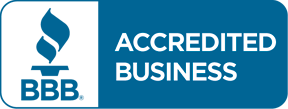Nobody likes going to sleep feeling uncomfortable or unsafe. Learning more about sleep apnea treatment options may help you find what you need for a safer, stress-free night of sleep. Without treatment, sleep disorders can cause health problems such as cardiomyopathy, hypertension, diabetes, and stroke. The best first step you can take is talking with a medical professional. Your doctor can help you find the therapy that works best for you.
Mechanical Therapies
Continuous Positive Airway Pressure (CPAP) machines and Bi-Level Positive Airway Pressure (BIPAP) machines are the most popular forms of sleep apnea treatment. Pressurized air runs from a machine, through a lightweight tube, and into your body, constantly circulating air while you sleep.
When these machines are used regularly, you encounter fewer hypopnea episodes during sleep and feel more energized throughout the day. PAP machines are also known to lessen snoring. For many, this is a huge positive associated with this sleep apnea treatment option.
Nerve Stimulation
Nerve stimulation is a therapy where a device is implanted on the right side of your chest beneath the skin. Electrodes are placed under the skin and connected to the hypoglossal nerve between your ribs. Then, the hypoglossal nerve is stimulated each time you take a breath. This treatment provides a clear breathing path during sleep and is often used for obstructive sleep apnea (OSA). Central sleep apnea (CSA) can be treated with neuro-stimulation therapy where a device is implanted in the chest and sends signals to control breathing. Both therapies are effective sleep apnea treatment options and can lead to safer, more comfortable sleep.
Positional Therapy
Your sleep apnea struggle may be impacted by the position you sleep in at night. Some people are devoted back sleepers while others roll around on their bellies. Even though comfort is crucial and your sleep style can be a hard habit to break, it can help your sleep apnea tremendously.
Positional therapy is a traditional technique pushing your mind and body to find more comfort in side-sleeping rather than back or belly sleeping. Pinning a tennis ball in a sock to the top of your shirt or pajamas forces your body to turn to the side where breathing is easier. Many professionals suggest using a wedge-pillow if tennis ball positional therapy doesn’t work so that your position is more upward than flat on your back.
Oral Appliances
While many people don’t immediately connect sleep apnea with dental concerns, those with sleep apnea fully understand the connection. Working with your dentist is a great step when searching for a sleep apnea treatment option.
There are many types of oral appliances to help make sleep more enjoyable. Many of these devices are unique mouthguards that keep the tongue and throat from caving into the airway at night. On top of bettering sleep apnea symptoms, these mouthguards can reduce snoring and teeth grinding. Fitting for most sleep apnea mouthguards can take as little as fifteen minutes and adjustments are easy when working with a dental professional.
Conservative Therapies
Conservative therapies are seen as ways you can prevent the negative long-term side effects of sleep apnea. These are lifestyle and health adjustments you can do to help better your health and your night’s sleep. Some conservative treatments include healthy weight loss, using a wedge pillow, trying nasal spray, and avoiding alcohol or some sleeping pills.
Of course, your sleep apnea is unique to you and your lifestyle. While some conservative therapies may be the best sleep apnea treatment option for one person, it doesn’t mean they are ideal for you. Discussing lifestyle changes with your specialist and creating a plan can help you transition toward sleeping safely and soundly at night.

